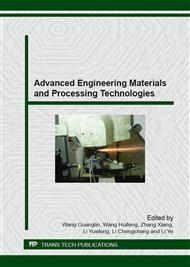p.200
p.206
p.213
p.218
p.224
p.231
p.237
p.244
p.250
The Study of Finite Element Simulation for Cooling after Heating Process of Rail
Abstract:
Because of the non-uniformity of the section shape of rail and complexity of its temperature changing, the degree of thermal expansion and contraction of section must be different which leads to the interior stress is produced inevitable in it. The residual stress in rail is elastic stress and its maximum value is elastic limit stress. They affect the dimension stability, mechanical property, deformation and etc. And it is the important factor of rail quality. This paper builds a finite element model of temperature field through the MSC.Marc software during the process of heating and cooling of 55Q rail, which simulates the rail stress field of air cooling and water cooling. Our paper conducts the experiments on the rails of same material and condition and also selects the temperature and stress of appointed nodes to analyze them. The results of experiments and simulations are very identical. Simulating the residual stress of air cooling and water cooling, the result is that residual stress of water cooling is bigger than that of air cooling. This consequence gives the reference for planning the suitable heat treatment and improving the service life.
Info:
Periodical:
Pages:
224-230
Citation:
Online since:
October 2015
Authors:
Keywords:
Price:
Сopyright:
© 2016 Trans Tech Publications Ltd. All Rights Reserved
Share:
Citation:


